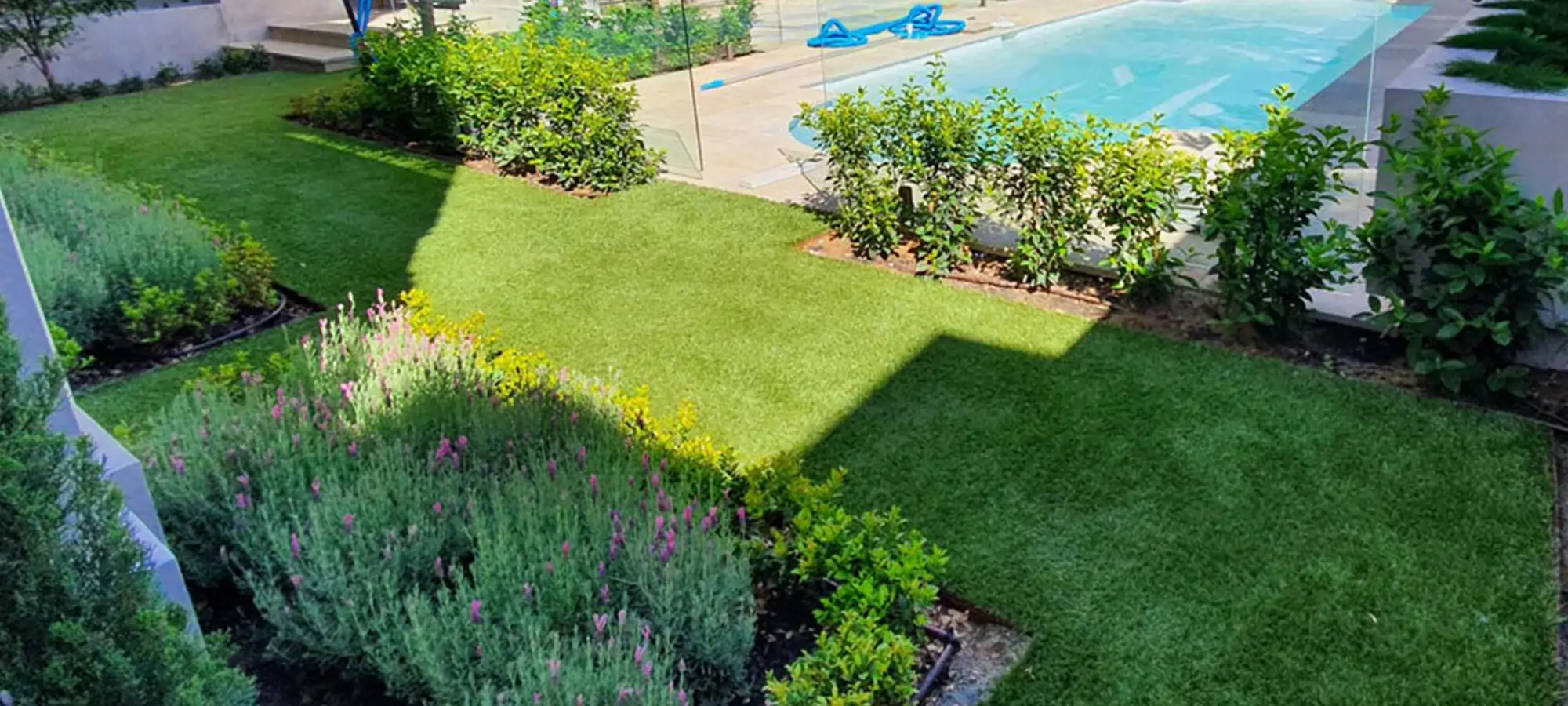Avoiding Damage to Synthetic Grass from Reflected Heat & Sunlight
Avoiding Damage to Synthetic Grass from Reflected Heat & Sunlight

How to Prevent Heat and Sunlight Reflection Damage on Artificial Grass in Perth
Artificial lawns are tough, durable, and designed to withstand Perth’s harsh summer conditions. However, like many outdoor surfaces, synthetic grass can be vulnerable to damage from concentrated reflective heat or magnified sunlight. This problem is rare, but when it occurs, it can cause melted patches or distorted fibres that shorten the life of your lawn.
By understanding the risks and taking some simple preventative steps, you can ensure your artificial grass stays lush, safe, and beautiful for many years.
How Heat and Light Affect Synthetic Grass
Australian-made synthetic turf is manufactured to cope with high levels of UV radiation and withstand surface temperatures of around 65–70°C. However:
- Polyethylene (PE) fibres begin softening and melting at 85–90°C.
- Concentrated sunlight—such as reflections from glass fencing or metal sheeting—can push surface temperatures to 100°C or more.
This means that while everyday sun exposure won’t harm your lawn, reflected or magnified heat can cause localised damage.
Common Causes of Reflection Damage
- Glass pool fencing – sleek and popular, but can concentrate and magnify sunlight, melting turf.
- Glass balustrades or Perspex panels – reflections can damage lawn areas below.
- Colourbond fencing – dark or metallic finishes can radiate heat back onto nearby turf.
- Other reflective surfaces – such as Perspex basketball backboards, shed walls, or decorative panels.
For more on durable installations near fencing: Artificial Grass for Swimming Pool Areas
Preventative Measures to Protect Your Lawn
The good news is that reflection damage is avoidable. With smart design and landscaping choices, you can protect your investment and create a cooler, more comfortable outdoor space.
1. Around Pool Fencing
Extend paving near glass pool fences to prevent lawn from sitting directly against reflective surfaces.
Use decorative stones, pebbles, or feature tiling as a buffer zone.
Plant hedging (e.g., Viburnum Tinus) for natural shade and heat reduction.
2. In Garden Areas
Create garden beds 60–100 cm wide around fences or reflective surfaces.
Plant shrubs and perennials to absorb heat before it reaches synthetic lawn.
Use mulch to keep soil cool and reduce overall garden temperature.
3. Use Deciduous Trees for Seasonal Shade
Plant trees that provide dense summer shade while allowing gentle winter sunlight.
This approach not only protects synthetic grass but also cools your entire backyard environment.
Environmental & Lifestyle Benefits
These preventative landscaping measures don’t just protect synthetic lawn—they also make your home more comfortable and eco-friendly:
- A shadier backyard creates cooler areas for people, pets, and wildlife.
- Reduced backyard temperatures can help lower indoor cooling costs during summer.
- Trees and garden beds improve air quality and enhance property aesthetics.
For design inspiration: Residential
Conclusion
While rare, reflection damage from heat and sunlight can impact synthetic lawns in Perth. By planning landscaping carefully—using paving buffers, planting hedges, and adding shade—you’ll protect your turf and enjoy a cooler, greener, and more inviting backyard.
Ready to discuss a safe and stylish installation? Contact Green Planet Grass today.
📞 Green Planet Grass – 0459 490 983
🌐 www.greenplanetgrass.com.au

Frequently Asked Questions

Frequently Asked
Questions